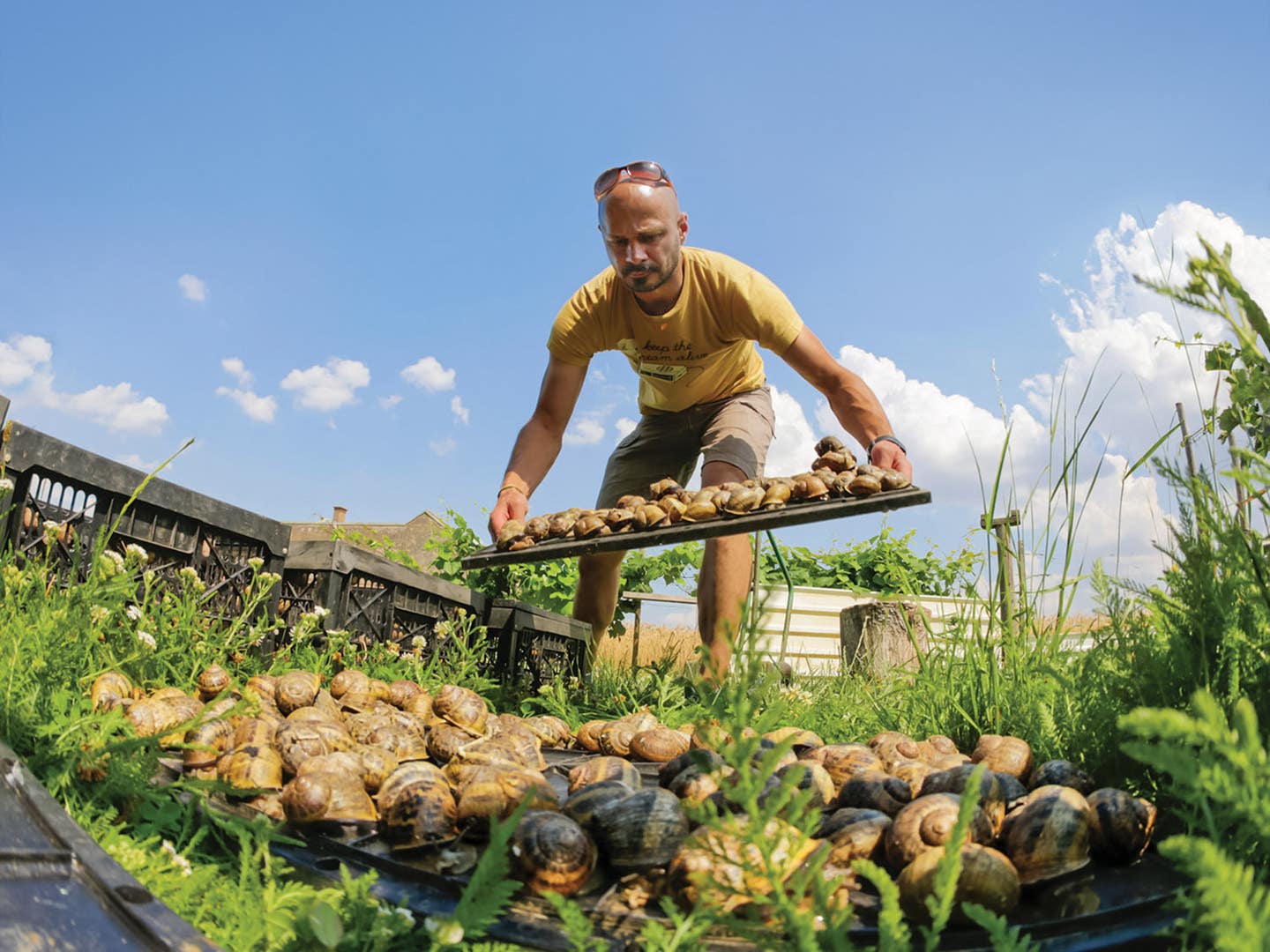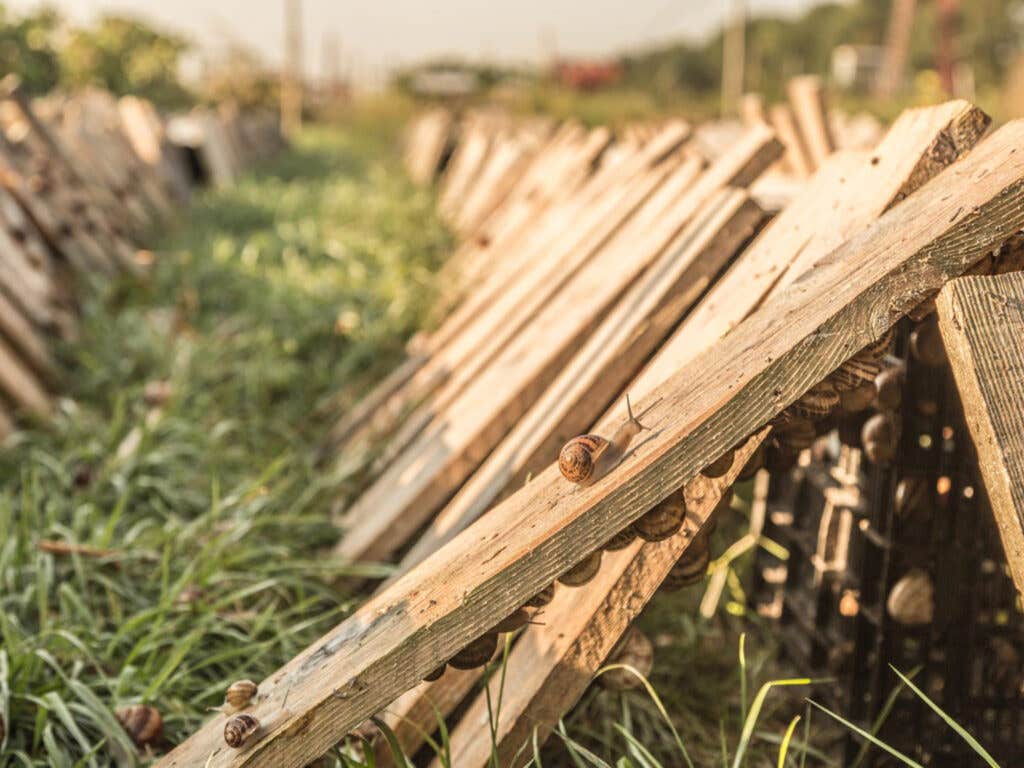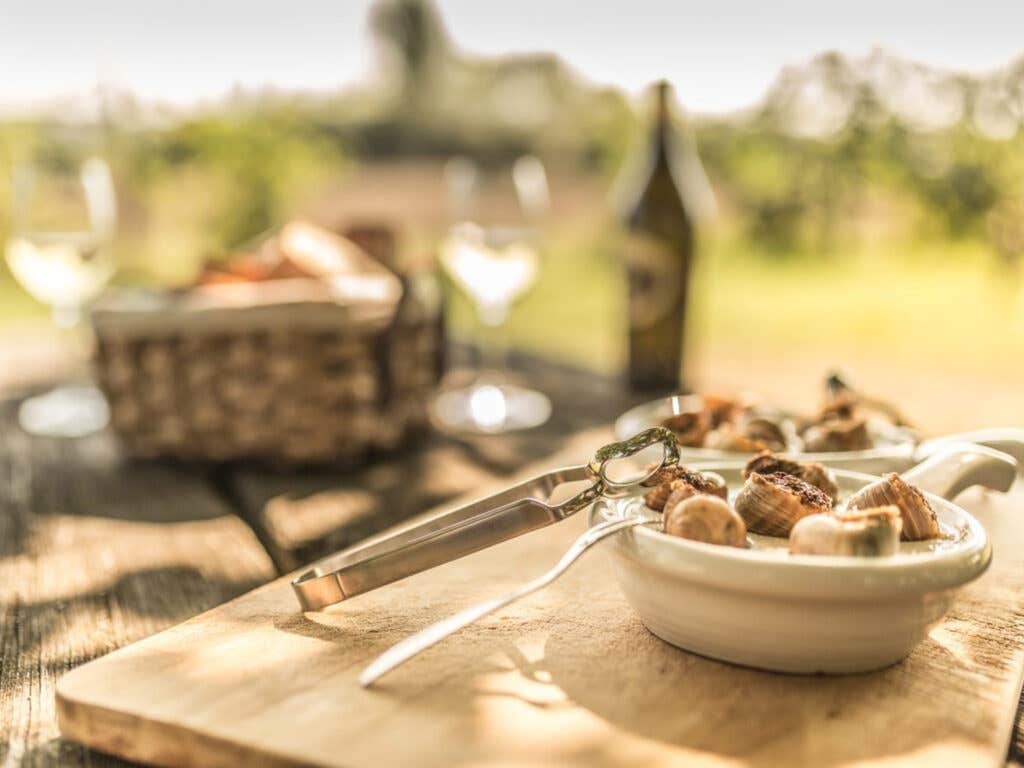
Snails Are Making a Comeback in Austria, Thanks to This Farmer
Vienna farmer Andreas Gugumuck is single-handedly ensuring that the snail will prevail
In Vienna's 10th district, one of lush parks and simple red-brick buildings, Andreas Gugumuck tends his rows of low wood paddocks, the shadowy spaces he created in his sprawling urban garden for his snails to breed in. "It's a paradise for them," Gugumuck says. The farm's calcium-rich soil and the area's consistent rains help maintain the snails' ideal level of humidity. This year, his farm will yield around one and a half tons of the mollusks, most of which he's either serving at his own on-site restaurant, Wiener Schnecke (Schnecken means "snails"), or sending out to the best chefs in Austria.
In 2008, after inheriting the 400-year-old farm from his grandmother, Gugumuck left his job at IBM in hopes that he could reintroduce this nearly extinct culinary delicacy to modern-day Vienna. He just needed to create an environment in which several different species (Roman, Mediterranean, and pedigree snails) could thrive. According to Gugumuck, it wasn’t difficult. “Breeding snails is the same as keeping a garden,” he says.
Snails make up a forgotten piece of Viennese cuisine. While most people have heard of crispy Wiener schnitzel or Sachertorte, not many realize that during the Middle Ages, Vienna was the global leader in snail consumption. Introduced by the Romans, these mollusks were a staple largely because the Catholic church allowed them as an alternative to the red meat that was historically restricted during fasting times such as the 40 days of Lent. They weren't just cooked with butter and garlic like you might see in a French bistro, but eaten alongside chicken, stirred into ragout, stuffed into sausages, or fried as a street-food snack.
Eventually the government made it illegal to harvest snails in the wild. The exact reason has been lost to history, but the city’s taste for Schnecken widely vanished.

Inspired by vintage recipe books, Gugumuck started with 20,000 snails; this year, he will produce 300,000. His garden contains about half an acre of outdoor breeding fields, which he calls a "salad farm" for the Swiss chard, mustard greens, and carrots he grows there. But the snails' favorite meal might be sunflowers. "They love sunflowers so much that I can't actually grow them," he explains. "Otherwise, they eat them until they're dead."
Snails are efficient at converting plant matter into protein, and, Gugumuck says, loss to predators or weather is negligible. While the Mediterranean variety can be ready for eating in one season—usually April to November—the Roman snail, the largest, with a shell that can grow up to 2 inches around, can take two years, and longer if the snails slow their eating early in the season. So his main efforts are typically spent making sure the snails are eating, because, to chefs, “snail quality is all about the size.”

To help spread the word beyond in-the-know restaurants, Gugumuck hosts two snail festivals a year, including one during Lent, to show off the wide culinary possibilities—or at least to encourage people to move beyond dousing them with butter. At his own 28-seat dining room, he serves them in parfaits, goulashes, tartares, and sausages, among other preparations. "My snails taste like mild veal, with a bit of earthiness," he says. "So if they say the best thing about snails is the butter, it's because those snails just aren't good enough."
Keep Reading
Continue to Next Story










